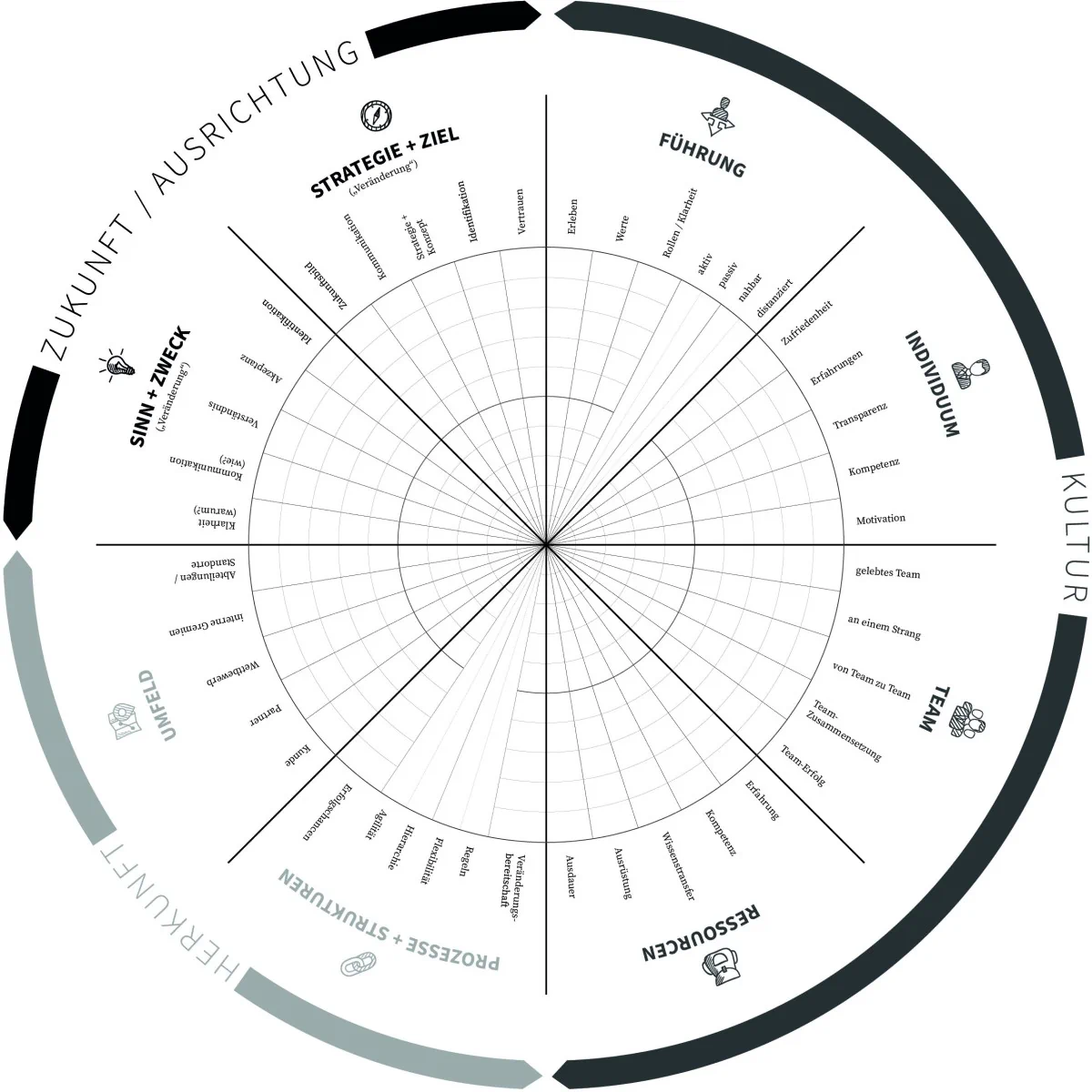SUCCESSFUL CHANGE MANAGEMENT THROUGH VALUE-BASED ORGANIZATIONAL DEVELOPMENT AND CHANGE MONITORING
A successful change process requires, among other things, the following factors: A clear vision, a targeted strategy and analysis of the process steps. However, no change works without the right mindset of the leader and the hands-on mentality of the team. Emotions in change projects are an important factor for success and are often underestimated by managers.
Change management is primarily about adapting to new internal and external environmental conditions. For example, one driving factor is the reorganization of the company to a more agile way of working.
An important goal and aspect of change management is to reach the team emotionally and to create enthusiasm for the change. The emotions of employees and managers make a decisive contribution to the change process. In order to exploit the full performance potential, managers must get employees excited about the change process and the defined goal.
Define
In the first phase, "Define", the focus is on the problem. How can the problem become a goal and what is the intention behind it? By formulating the goal, a vision is created to guide the employee through each phase of the process.
Discover
Strength-focused interviews follow to discover the positive core of the employee. The success stories are particularly emphasized, which stems from positive psychology and is intended to create enthusiasm and energy for change.
Dream
Is modeled on the "Define" phase, in which all contributors are asked to create an attractive vision of their ideal future.
Design
The design phase is a composition of the success stories and the ideal vision, which is further developed into a realistic forecast of the future with initial designs.
To create a real willingness and enthusiasm for the change process, all stakeholders must be involved by participating in the implementation of structural changes, new learning processes and routines. Involvement promotes self-efficacy and personal responsibility among employees, which can have a positive impact on motivation. In the next step, clear action steps are developed together and measures are defined, which are then evaluated and successes communicated.

HOW DOES CHANGE MONITORING CHANGE THE CHANGE MANAGEMENT PROCESS?
Change management is understood as a strategic orientation of change processes from an initial state to a target state. The focus is on a strategically clever and effective implementation of the adjustment processes with the help of various concepts, instruments and measures.
At the beginning of a strategy there is always a vision, in this case "Change Vision", which is to serve as a guiding principle for goal orientation. The vision is used to derive the factors for successful control and implementation of the measures with regard to the objective.

This change vision is understood as a mentoring mentality between experts and companies willing to change, in that through appropriate interventions the managers and employees with the involvement of change monitoring the goals should be achieved. The reason for involving people in the process is to develop an understanding of the upcoming changes. Especially the positive effects and the initial situation should be communicated and together with the groups of people, an adequate approach for all should be developed. Only with integration of the people affected in the change process, a change can take place positively and in the long term. Resistance and demotivation significantly impair the change process and contribute to a lower utilization of the potential. In order to create an understanding of the process, the strategy and the next steps are explained at the beginning, as well as the necessary measures for the respective team.
Through regular reflection and the exchange of information, managers are given a high level of support in the process and the focus is placed on the strengths and resources of the company and its employees. The further development and strengthening of action competencies are also part of the concept and are conveyed through a "learning by doing" attitude. No detailed plans with instructions for action are given, but rather scope for design and action is created through trial and error and experimentation, adapted to the individual needs of the company.
The success factors, derived from the change vision, are above all the confidence and conviction of the upcoming changes. Likewise, all people should have a certain adaptability and a constructive-critical attitude in order to support the satisfaction of all those involved through improvements in future change processes. Even in the event of uncertainties and difficult changes, orientation is provided with regard to further development. Change monitoring was developed to control the success of the processes and to intervene in time in case of negative effects. A suitable method establishes the representation of success factors in a change radar. This is used for feedback and verification of goal orientation, in particular the analysis of mood and emotions.
At the beginning, the current state of the success factors of the employees and the company is analyzed: Clarity of goals and impact, understanding of strategic planning, and perception of appropriate communication of processes. Likewise, a subjective assessment of the mood towards the process, orientation and confidence as well as adaptability will be made.
This process is repeated several times at later points and is intended to contribute to a goal-oriented strategy focused on the change vision and to highlight the effectiveness of the change process. It also serves to illustrate the progress of the process and can increase the motivation and commitment of the employees who are significantly involved in the change process and influence its success. A good change management strategy is characterized by the fact that it is accompanied by change monitoring measures at various points in time and is focused on achieving the change vision.
Literature:
Arndt & Schaff (2019): Emotionen als Erfolgsfaktor im Change-Prozess,
MTI – MACHWÜRTH TEAM INTERNATIONAL (2019): Die vier Phasen eines Veränderungsprozesses
Cooperrider, D. L. & Godwin, L. (2011). Positive Organisationsentwicklung: Innovation inspirierter Wandel in einer Ökonomie und Ökologie der Stärken. In K. Cameron und G. Spreitzer, The Oxford Handbook of Positive Organizational Stipendium, S. 737-750, Oxford, UK: Oxford University Press.











